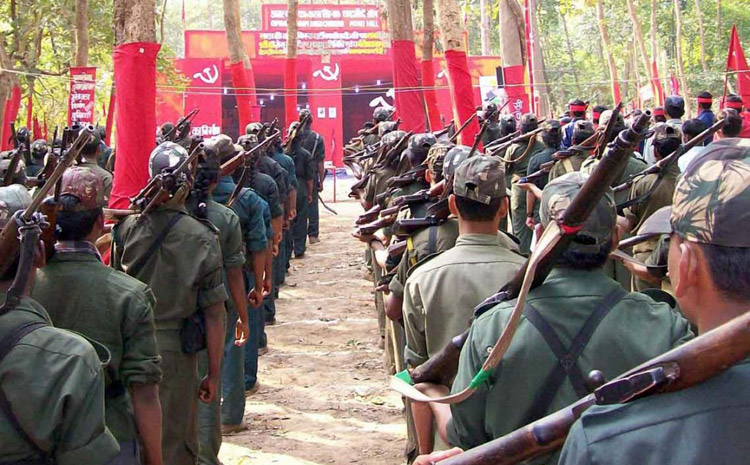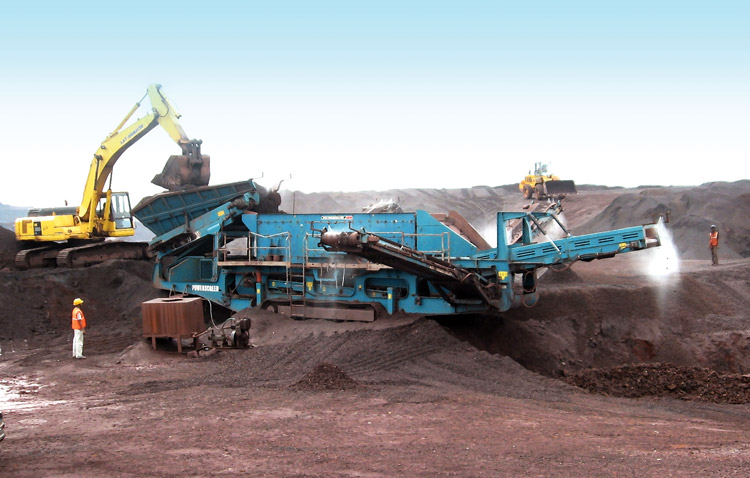INDIAN ARMED FORCES CHIEFS ON
OUR RELENTLESS AND FOCUSED PUBLISHING EFFORTS

SP Guide Publications puts forth a well compiled articulation of issues, pursuits and accomplishments of the Indian Army, over the years

I am confident that SP Guide Publications would continue to inform, inspire and influence.

My compliments to SP Guide Publications for informative and credible reportage on contemporary aerospace issues over the past six decades.
- Interim Defence Budget 2024-25 — An Analysis
- Union Defence budget 2024
- Indian Army: In quest of greater firepower and policy recommendations for gaps
- Indian Army Annual Press Conference 2024
- 6G will transform military-industrial applications
- Tata Boeing Aerospace Delivers 250 AH-64 Apache Fuselages, Manufactured in India
Maoists, Mining and Environment
 |
The Author is Former Director General of Information Systems and A Special Forces Veteran, Indian Army |

As per news reports of June 11, 2019, Chhattisgarh Chief Minister has stopped all mining activities at Dantewada Iron Ore Deposit after tribal protest for days. The report says that a few days ago, dressed in their traditional attire and armed with weapons, about 10,000 tribals from 60 villages of Dantewada and Bijapur districts had staged an agitation opposing mining activities in Bailadila iron ore deposit-13. About 3,000 of them stayed back and started cooking and living in small tents at the site. The fact that 10,000 tribals "armed with weapons" turned up for the agitation, belies all claims that the Maoist insurgency is almost over or will be over in the near future. The tribal population is reportedly outraged by possible destruction to local ecology and potential threat to their sacred place, Nadaraj Hill, where the mine is located. But apparently there is much more behind this agitation.
Prudence demands that Union Government acknowledge the real issues, not deal with them piecemeal. The National Mineral Development Corporation (NDMC) has granted the contract for the excavation and mine development to Adani Enterprises. NDMC issued a statement claiming that the contract was granted in a transparent and fair manner. Union Environment Ministry's Forest Advisory Committee (FAC) gave Stage 1 clearance to Parsa coal mining project despite clear concerns about diversion of rich forestland; FAC approved diverting more than 841.5 hectares of forestland for mining coal in Chhattisgarh's Parsa block; coal is to be mined by Rajasthan Collieries Limited, a subsidiary of Adani Enterprises; the decision did not go well on ground because there are already two coal mines in the area, plus a 75-km railway line to transport coal, disrupting wildlife corridors and damaging ecology; FAC chose to ignore observations by the Chief Conservator of Forest, Chhattisgarh, as well as suggestion by the Chhattisgarh Government asking detailed site inspection before according approval, which FAC did on January 15, 2019. In the past, FAC had accorded forest clearance (FC) for coal mines in the area, like for PEKB and Tara mines ignoring similar objections. With the instant approval for diverting more than 841.5 hectares of forestland for mining coal in Parsa block, FAC has compounded the issue further. Chief Conservator of Forest, Chhattisgarh had represented to the FAC saying, "..."had it been on a standalone case of mining, given the density of forest, it would not deserve consideration for approval under the Forest (Conservation) Act, 1980. However, as the proposed area is one of the 3 coal blocks, out of which mining is already going on in coal block contiguous to this area, the proposal may be considered".

The FAC did not even wait for a biodiversity assessment study to be done before taking the decision. According to the Centre for Science and Environment, New Delhi, "Biodiversity impact assessment in decisions of forest clearance is critical. The value of ecosystems and biodiversity cannot be treated as a postscript of forestland diversion decisions. A comprehensive impact assessment report taking into account ecological, environmental and social consequences of forestland diversion is the need of the hour to improve the integrity of the FC process. Now news reports of March 21, 2019 state that Centre has given the nod for mining in 170,000 hectares of forest in Chhattisgarh. But the question is whether expert bodies of the government will continue to decide on these matters taking into account thorough assessment of environmental, ecological and social impacts of the proposed projects, or will their decision rely on a fait accompli situation, where one mine creates justification for opening up of more mines? Hasdeo Arand is one of the largest contiguous stretches of very dense forest in central India, spanning about 170,000 hectares. Parsa is one of the 30 coal blocks in Hasdeo Arand. In 2018, the Environment Ministry's Expert Appraisal Committee (EAC) reportedly consulted the State Tribal Welfare Department, but obviously the Village Panchayats were never consulted by the latter. Had this been the case, 10,000 tribals from 60 villages would not be protesting in this manner.
Considering that builders and miners are two of the biggest enterprises in India (legal or illegal), the State Tribal Welfare Department could have been bought over to give consent. In the book 'By way of Deception' by Ostrovsky and Hoy, a CIA officer while talking to an ISI man made a remark that Indians can sell their mothers if the price is right. That said, the argument as always is that we have to pay a price for development. But can we afford to ignore our ecology and forests considering the blistering temperatures this year which will reportedly go up next year? Forests are directly related to rainfall and water tables that are decreasing dangerously. There are reports of crores of trees cut over past years for development. Union Minister, Nitin Gadkari has announced that 200 crore trees will be planted along highways. This is good, albeit execution will matter; plantation schedule, maintenance and level of growth to affect ecology and environment. Most importantly, such mining activity in the Maoist belt needs to be viewed in the following context: tribals have rights from forest land under the Constitution, violation of which are one of the reasons of Maoists insurgency; royalty paid, say for one tonne of iron ore, goes to the State Government with little coming back to the local community; media reports that there are 'no more tribals in the real sense' are fake; bulk of the royalty must get back to tribal homelands; show of 10,000 armed tribals indicates Maoist insurgency will take many years of resolution, especially when security forces have not been able to recover bulk of the automatic weapons taken from security forces by Maoists through ambushes and attacks, and; more mining implies more availability of explosives for Maoists. Prudence demands holistic re-examination, not passing the blame for continuing insurgency.





